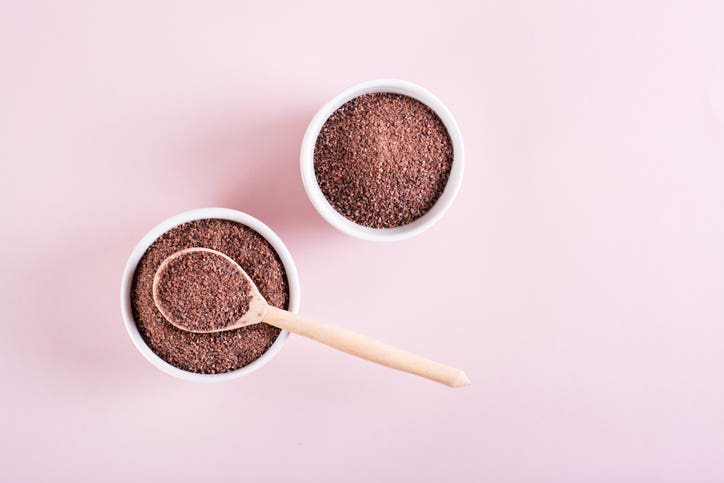Insulin resistance significantly increases your risk for the development of a collection of health conditions, including type 2 diabetes, heart disease, fatty liver disease, chronic kidney disease, and Alzheimer’s disease.
What Is Insulin and Why Is It Important?
Insulin is a hormone that is manufactured and secreted by the pancreas in response to rising blood glucose. When you consume carbohydrates, the glucose that enters the bloodstream signals the beta cells to make insulin. Insulin communicates with tissues all over your body and signals tissues that glucose is available. In effect, insulin says, “Knock knock. If you want to uptake glucose, this is your chance.”
Without insulin, cells in the liver, muscle, and fat have a difficult time importing glucose from the blood. These tissues can transport only a small percentage (5 to 10 percent) of the glucose in circulation without the help of insulin. When insulin is present, it increases the amount of glucose that can be transported into tissues, allowing them to be properly fed, and keeping the amount of glucose in the blood in the normal range.
This process of transporting glucose into your muscle and liver is important because every cell in your body uses glucose for energy. (Besides glucose transport, insulin also escorts amino acids and fatty acids into cells.) The system looks like this:
What Is Insulin Resistance and Why Is It Important?
Insulin resistance is a condition in which multiple tissues in the human body become resistant to the effects of insulin. In our New York Times best-selling book Mastering Diabetes, we take a deep dive into this subject and demonstrate how insulin resistance underlies almost all chronic diseases, including cardiovascular disease, fatty liver disease, chronic kidney disease, and Alzheimer’s disease.
Simply stated, insulin resistance occurs when tissues become “blind” to insulin. As a result, the pancreas is forced to secrete increasing amounts of insulin, resulting in a condition known as hyperinsulinemia. Hyperinsulinemia is a dangerous condition for many tissues, simply because elevated insulin concentrations in the blood act as potent signals for cell growth. More insulin means more tissue growth, resulting in increased body fat, increased cell replication rates, and a significantly increased risk for cancer.
Many studies have now begun to uncover the link between insulin resistance and cancer. One study states the following:
“Insulin resistance is common in individuals with obesity or type 2 diabetes (T2D), in which circulating insulin levels are frequently increased. Recent epidemiological and clinical evidence points to a link between insulin resistance and cancer. The mechanisms for this association are unknown, but hyperinsulinaemia (a hallmark of insulin resistance) and the increase in bioavailable insulin-like growth factor I (IGF-I) appear to have a role in tumor initiation and progression in insulin-resistant patients.”
How Much Do Scientists Know About the Causes of Insulin Resistance?
There is a significant amount of confusion about what actually causes insulin resistance, and I witness it every day in our work coaching people with diabetes as well as in my career as a nutritional biochemist.
A large gap exists between the scientific research on insulin resistance and what the general public understands about it. Most health professionals were never taught the basic biochemistry of insulin resistance, and are unaware of the latest research. Unfortunately, excellent research does no good if the information is not put in the hands of those who need it. This is certainly the case with insulin resistance.
This gap exists for a number of reasons and is heavily influenced by economic forces that profit on lifelong chronic diseases like diabetes. The practice of educating doctors improperly is what keeps life-saving information out of the hands of those who need it.
The Major Cause = Lipid Overload
Researchers debate the causal mechanisms of insulin resistance tirelessly, day after day, and travel thousands of miles to attend large conferences to flex their scientific muscles. They propose every mechanism you can imagine, and blame every tissue you can think of, from the pancreas to the muscle to the liver to the brain to your blood.
To say that insulin resistance has a single cause is an oversimplification. To say that it is a complex metabolic condition with many causes is much more accurate.
Despite this, however, researchers in the laboratory environment can induce insulin resistance in people incredibly easily. Regardless of the endless intellectual debate, almost every laboratory on the planet that studies insulin resistance utilizes one simple technique to consistently induce insulin resistance: a diet high in fat. Not a diet high in carbohydrates.
In some studies, researchers use a diet high in both fat and sucrose (white table sugar), to ensure that both the muscle and the liver become insulin resistant. The reason for this is simple: dietary fat causes lipid overload in muscle and liver, resulting in a reduced ability of insulin to import glucose.
Considerable scientific evidence clearly indicates that excess fatty acids are a potent cause of both muscular and liver insulin resistance. A recent review and meta-analysis of the medical literature states: “Prolonged exposure of skeletal muscle and myocytes to high levels of fatty acids leads to severe insulin resistance. Among the different types of fatty acids, saturated long-chain fatty acids such as palmitic and stearic acids were demonstrated to be potent inducers of insulin resistance.”
Researchers have shed light on the ability of excess fatty acids (dietary or structural, meaning body fat) to induce low-grade inflammation, which acts as an initial step in a series of events leading to damaged blood vessels, liver disease, heart disease and hypertension:
“Elevated free fatty acid levels (due to obesity or to high-fat feeding) cause insulin resistance in skeletal muscle and liver, which contributes to the development of type 2 diabetes mellitus (T2DM), and produce low-grade inflammation, which contributes to the development of atherosclerotic vascular diseases and NAFLD (non-alcoholic fatty liver disease).”
Too often, we blame carbohydrates for insulin resistance, despite significant evidence that excessive fat consumption results in excessive fat storage that ultimately creates whole-body insulin resistance.
Saturated Fat in Particular
Saturated fatty acids, in particular, are the most potent influencers of insulin resistance. Saturated fatty acids are derived mainly from animal sources, and have direct negative effects on the muscle and liver.
High concentrations of saturated fatty acids are found in the following animal foods:
- Meat (e.g., beef, chicken, pork, turkey, duck, and venison).
- Seafood (e.g., trout, cod, herring, salmon, sardines, shrimp, and crab).
- Dairy products from cows, goats, and sheep (e.g., milk, butter, sour cream, cream cheese, and cheese).
In addition, high concentrations of saturated fats are found in some plant foods like coconut-derived products (including coconut meat, milk, cream, butter, and oil).
Some of the direct detrimental effects of saturated fatty acid intake on muscle and liver tissue include:
- Mitochondrial dysfunction.
- Production of free radicals.
- Cellular inflammation.
Other Causes
Besides dietary fat, insulin resistance is also affected by a diet containing a significant amount of highly processed foods. This includes candy, donuts, many packaged goods, and frozen pre-made meals. To improve insulin sensitivity, aim to eat whole plant foods, which come prepackaged with a host of vitamins, minerals, antioxidants, phytonutrients, fiber, and water. These foods have untold health benefits, and are required for optimal health, athletic performance, athletic recovery, and protection against lipid overload.
Insufficient exercise is also a cause of insulin resistance. Exercise stimulates the muscle tissue to burn stored fat and to accept glucose from the blood. Adopting a regular exercise regimen is effective in improving insulin sensitivity.
Take-Home Message
It is important to recognize that insulin resistance affects everyone, even those who show no symptoms of high blood sugar. In order to ensure that you remain insulin sensitive, regardless of your current health status (diabetic or nondiabetic), follow these three steps:
- Consume a plant-based diet containing less than 30 grams of fat per day to improve your insulin sensitivity.
- Minimize or eliminate your consumption of highly refined, processed foods.
- Maintain a consistent exercise regimen with three to four sessions of cardiovascular exercise per week.
Check out our Plant-Based Primer to learn more about adopting a whole-food, plant-based diet.
This article was originally published on March 22, 2016, and has been updated.

Related News
Get Our Best Price On The Forks Meal Planner

Forks Meal Planner takes the guess work out of making nutritious meals the whole family will enjoy.
Master Plant-Based Cooking!

Our new course features over 100 lessons, 50+ recipes, downloadable guides, and more!



